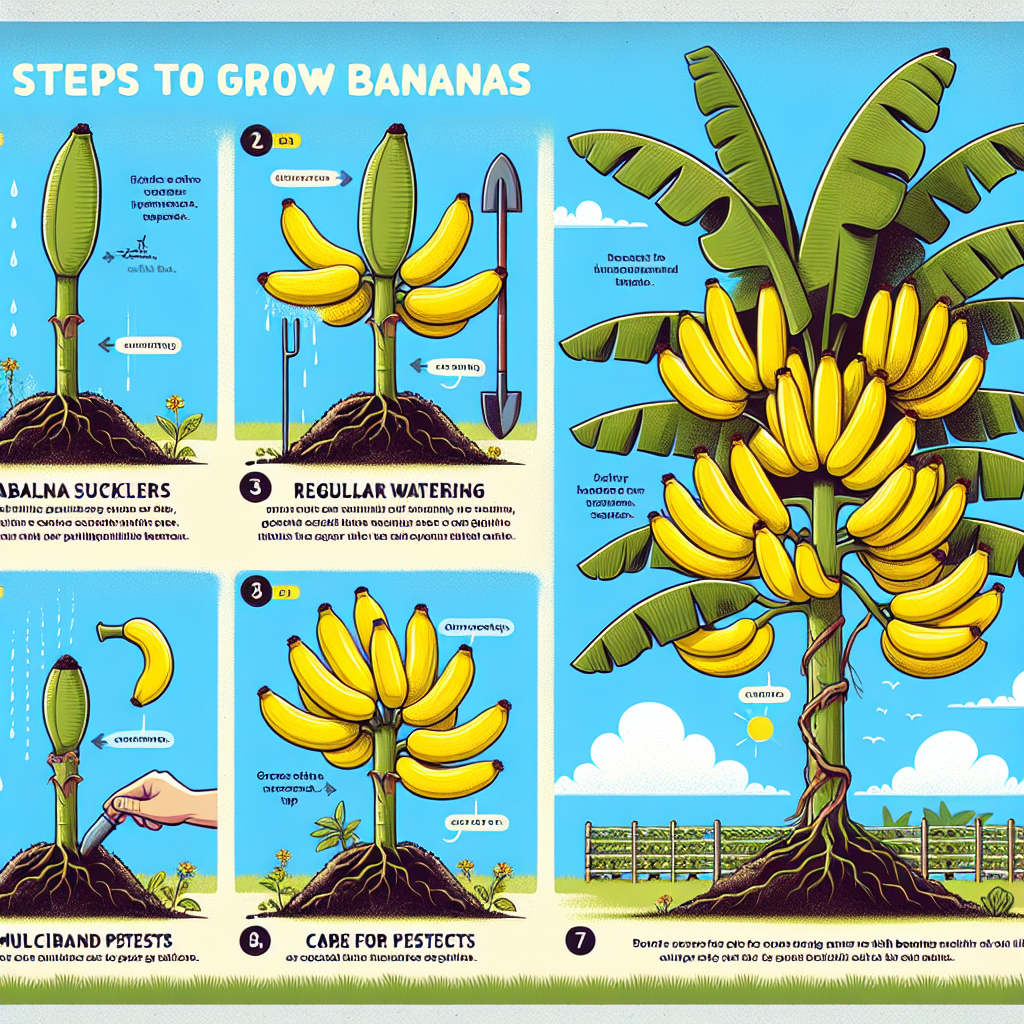
How to grow bananas
How to Grow Bananas: A Comprehensive Guide
Growing bananas can be a rewarding endeavor whether you're a seasoned gardener or a novice just starting out. Known for their sweetness and nutritional benefits, bananas are one of the most popular fruits in the world. With the right conditions and care, you can successfully cultivate your own banana plants at home. In this article, we will explore the necessary steps, tips, and techniques for achieving a healthy banana crop.
Understanding Banana Plants
Before diving into the specifics of cultivation, it is important to recognize what banana plants are and their unique characteristics. Despite being referred to as trees, banana plants are actually large herbaceous perennials. They can grow anywhere from 5 to 25 feet tall, depending on the variety. The following characteristics make banana plants unique:
- Size: Banana plants can grow quite large, so adequate space is essential.
- Climate: They thrive in warm, tropical climates.
- Soil Requirements: Bananas prefer rich, well-draining soil.
- Water Needs: These plants require a significant amount of water to flourish.
Choosing the Right Variety
There are several different varieties of bananas. Some of the most popular include:
- Cavendish: The most common type found in supermarkets.
- Dwarf Brazilian: A smaller variety ideal for small spaces.
- Red Bananas: Known for their reddish skin and sweet flavor.
- Plantain: A starchy variety used for cooking rather than eating raw.
When selecting a variety, consider your climate, available space, and whether you want to grow them for eating fresh or for cooking. This understanding will guide you in deciding which type of banana will best suit your needs.
Site Selection and Preparation
Once you've chosen your banana variety, the next step is to prepare the site for planting. Below are essential factors to consider when selecting and prepping a site:
Climate and Temperature
Bananas thrive in warm, humid environments. Ideally, temperatures should stay between 75°F to 95°F. They can tolerate cooler conditions, but prolonged exposure to temperatures below 50°F can hinder growth.
Soil Preparation
Bananas prefer well-draining soil with a pH level between 5.5 and 7.0. Follow these steps to prepare the soil:
- Test the pH level and amend if necessary.
- Ensure the soil is rich in organic matter.
- Avoid compacting the soil; use organic mulch to retain moisture.
"Good soil is crucial for healthy banana plants." - Gardening Expert
Planting Banana Plants
Once the site is prepared, it’s time for planting. Follow these steps for the best results:
When to Plant
The best time to plant bananas is during spring or early summer when the chance of frost has passed. Timing is critical for ensuring that the young plants get sufficient warmth and moisture.
How to Plant
- Dig a hole about 2 feet deep and 2 feet wide.
- Place the banana plant (or corm) in the hole, making sure that the top of the root ball is level with the soil surface.
- Fill the hole with a mixture of soil and organic compost.
- Water thoroughly after planting to settle the soil.
Caring for Your Banana Plants
Banana plants require regular care to promote healthy growth and fruit production. Here are the main aspects of banana plant care:
Watering
Bananas need a lot of water, especially during the growing season. Ensure your plants receive around 1 to 2 inches of water per week. A drip irrigation system works well for maintaining consistent moisture levels.
Fertilizing
Regular fertilization is essential to support rapid growth. Here are the recommended fertilization practices:
- Use a balanced fertilizer with a ratio of 10-10-10
- Apply fertilizer every 6-8 weeks during the growing season.
- Incorporate organic matter like compost to enhance soil structure.
Pest and Disease Management
Like all plants, banana plants are susceptible to pests and diseases. Keep an eye out for the following:
- Spider Mites: These tiny pests can cause leaf damage; use insecticidal soap to treat them.
- Fusarium Wilt: A fungal disease that affects the roots; proper sanitation and resistant varieties can help manage this.
- Banana Weevil: A serious pest that can destroy young plants; consider using traps.
Harvesting Your Bananas
After several months of care, it will be time for harvesting. The process can vary depending on the variety, but the general rules are as follows:
When to Harvest
Bananas are ready to harvest when the fruit is plump and the edges of the bananas begin to round. The flower should have started falling off, and the fruit should have turned from green to a slight yellow hue.
How to Harvest
- Using a sharp knife, cut the entire bunch from the plant.
- Handle the bunch gently to avoid bruising the fruit.
- Allow the bananas to ripen in a warm room, avoiding direct sunlight.
Conclusion
Growing bananas can be a joyful experience that yields delicious and nutritious fruit. By following this guide on how to grow bananas, as well as being mindful of your plants’ needs for water, nutrients, and care, you will be able to cultivate a healthy banana crop right in your garden. Happy gardening!
By Guest, Published on October 20th, 2024